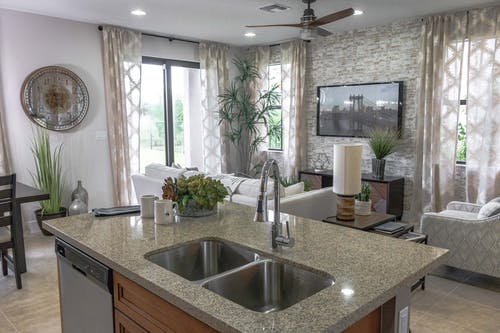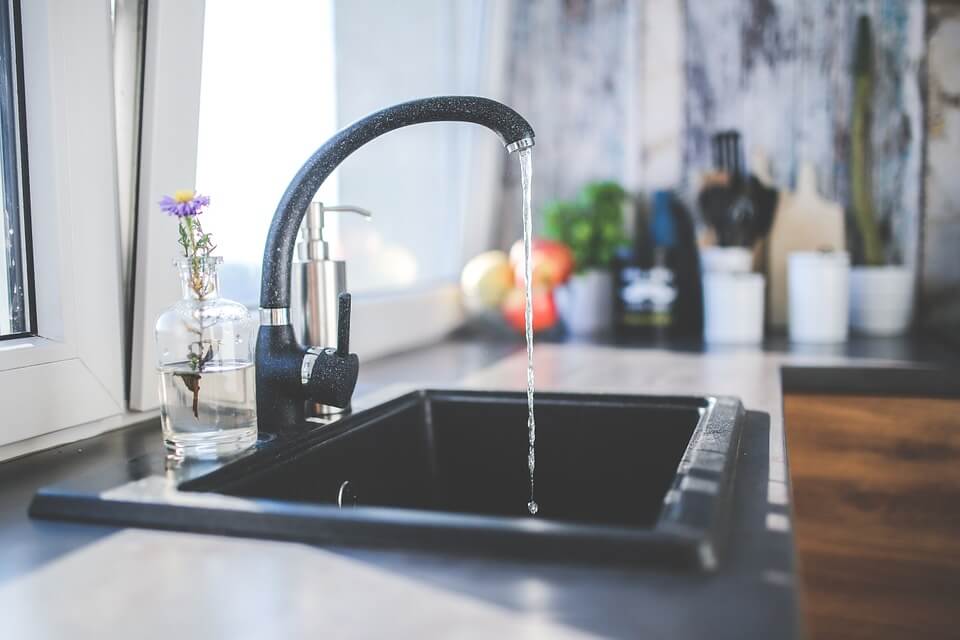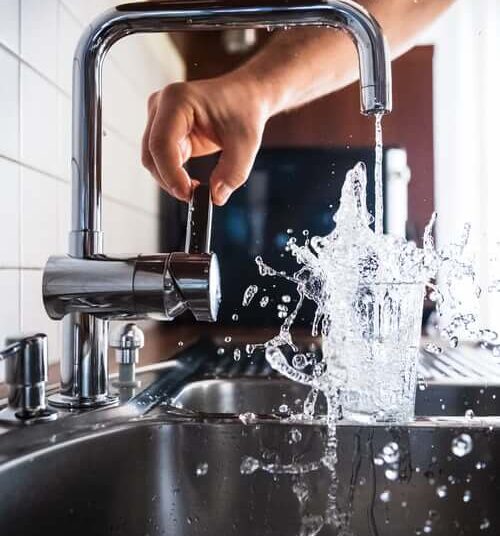Many of us no longer have the luxury of purchasing a brand-new kitchen. When countertops are worn down or outdated, we often DIY to save money and keep it within our budget. Replacing an old countertop is not as hard as you might imagine.
Removing your old counters can be done in one day if there are only two people working on it – this includes removing any cabinets underneath that may need to come out first.
You might be interested: How to Paint a Sink: Easy Steps, Cost and Helpful Tips
Why Do I Need a Countertop Makeover?

The importance of removing and replacing an old countertop is to give your kitchen that fresh look you desire without the hassle of tearing out your current surface. Resurfacing can happen in one day if there are only two people working on it – this includes removing any cabinets underneath that may need to come out first.
Once the counters are gone, prep the wall with a spackle for patching holes from screws and plugs left behind by those who installed them originally (if necessary). You’ll also want to sand away any paint residue before putting up drywall compound over these patches.
To avoid messy jobs like sweeping dust off newly resurfaced granite or marble it is recommended to cover the floor with a drop cloth before beginning.
It makes sense as an investment because nobody wants their home re-done because they bought something damaged at first sight. You deserve great quality work from start to finish–you’re worth it.
Now, let’s get to work!
How to Remove and Replace a Countertop?

Removing and replacing an old countertop can be a daunting task for the inexperienced. If you have never taken on such a project, it is best to start with smaller projects before tackling the big ones like this one. Once you are ready some of these tips will help make your first venture into home improvement work go smoothly:
- The first step is to remove all the items on top of the countertop like appliances, cookware, and small decorative pieces. Next, use a putty knife or scraper to remove any caulking that may remain around the edges of the countertop if there were any from previous installation attempts. You can also use sandpaper for this step as well. Be sure not to leave any residue behind because it could interfere with your new countertops’ bonding ability during the installation process-which means you will have to do this again.
- Once you have removed the caulking and any residue, sand it down to prepare for installation. You can also use a chemical cleaner like TSP or diluted bleach before using either of these methods if there is a significant buildup that needs removing first.
- Use mineral spirits on a rag to wipe away any remaining dirt from the surface of your countertop after sanding. This will ensure that your new counters do not get scratched during installation due to debris left behind by previous owners.
- Plan ahead. Make sure that all tools and materials are available as well as any furniture or appliances that need moving out of the way. This includes gathering up all items from under the sink so they don’t get in anyone’s way during installation. It also helps to set aside enough time for installing new cabinetry/countertops if needed; we recommend at least two days per side (approximately eight hours ).
- Your surface may be sensitive to chemicals, so make sure you wear gloves and use a sealant that is safe for your material type.
- Make sure the seams are taped down with an appropriate tape or compound before applying any of the resurfacing materials. This will ensure they don’t come up later. It’s also important to remove all old caulking around pipes and sinks before installation begins.
- Protecting surfaces from spills during this process can save time in repairs if anything happens to spill on your countertops after the installation has been completed – we recommend using plastic sheets (included) over windowsills, floors etcetera while working as well as clean cloths/sponges where needed throughout the
- Using masking tape around the edges of where your old countertop meets with walls can help keep everything in place while you remove it, greatly reducing the risk of injury because nothing will move when you pull up quickly. Also, make sure all objects are clear from the area where you will be working.
- Paint the edges of your old countertop and any other areas that are exposed to give yourself a guide for cutting in new material.
- If only one side is being replaced, remember to use an “L” shaped cut (to avoid having extra cuts) as well as use spacers on both sides so everything can sit level when installed; if two or more sides are being replaced then this step isn’t necessary
- Replace with appropriate screws but don’t tighten them fully until all pieces have been connected together. This keeps things from pulling apart while installing it into place. Don’t forget about the rubber trim that goes around the edge between cabinets/countertops and walls: They usually come in a few pieces for each piece of trim.
- Hold the new countertop in place, and mark where it needs to be cut with masking tape or painter’s tape on both edges. After cutting all sides (remember that you will need two cuts if installing more than one side), replace any spacers that were removed earlier
- Once the new countertop is securely installed, tighten screws as needed. If there are gaps between cabinets/countertops and walls then use silicone caulk to smooth them out; this should be done before installation though so that once it dries they don’t have to deal with messy cleanup later on
- Use your brush and paint over exposed surfaces after the caulking has dried. This includes any visible
When Is the Right Time to Remove and Replace Your Old Countertop?
The best time to remove and replace an old countertop is when it has been damaged by:
- Dirt, water stains, or other grime. Sometimes these things can be removed but many times they cannot
- Mildew appears over the surface due to pipes below leaking as well as mold growing on top of the wood
- Damage from pets such as scratches left behind in certain areas where your pet walks most often. This is usually a sign that you need to clean more regularly with bleach and/or vinegar solutions because bacteria are building up on those surfaces too. Be careful not to use any type of abrasive scrubbing pad though; this could make the problem worse if there’s any soft wood.
- Rust that has developed due to water or moisture penetration from the back side

One of the best advantages to removing your old countertop is you’ll be able to see any areas where damage may have occurred and then fix it before a more major problem arises such as serious rot, cracking, etc. This will save on repairs down the road and increase the life expectancy of your new countertops.
So, that’s it for now. Your countertop should now look as good as new thanks to your hard work. All you need to do now is to get your camera and start taking pictures of how well you’ve done your job. Remember to take pictures from at least four different angles and also include a shot of the back side for full coverage.
If you’re looking for more tips and tricks to improve your home, see more articles below.


















